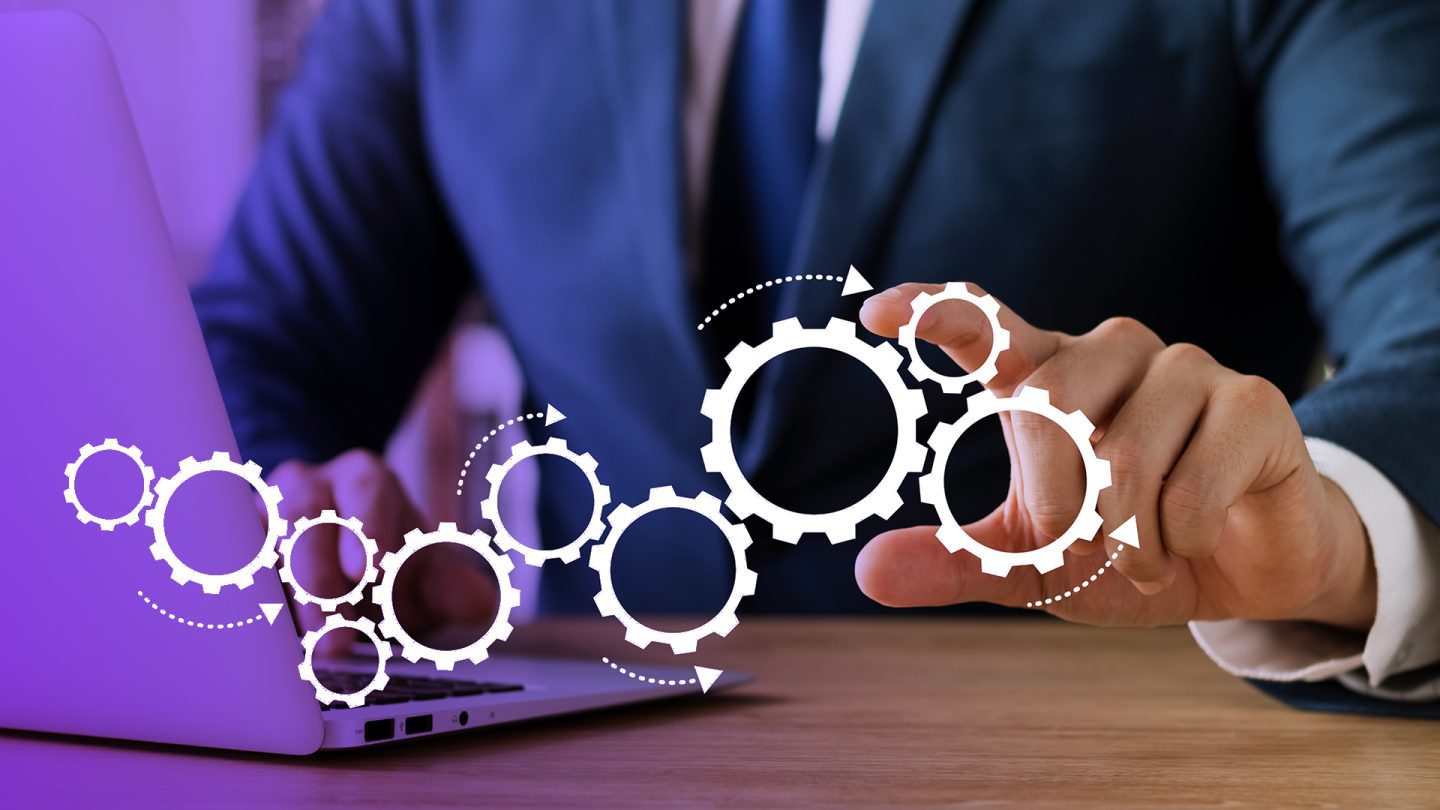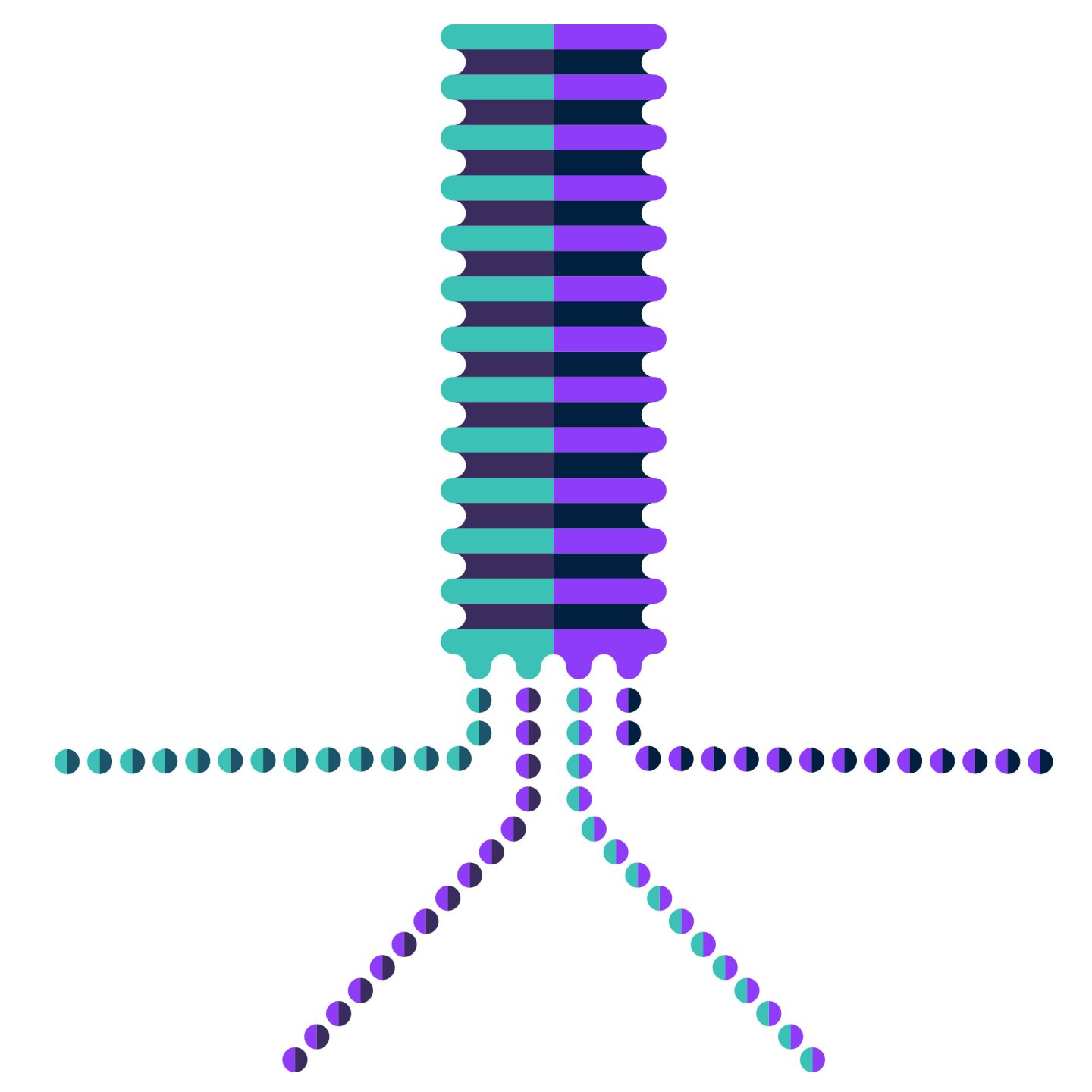What is process management 2030?
Learn about innovative ideas that link process management with current & upcoming technologies to take operational excellence to the next level.

Have you experimented with any of the new text-to-image generators such as OpenAI’s DALL-E 2, Google Brain’s Imagen, and Stability AI’s Stable Diffusion? Will this approach impact how we do process management in the future? Explore which innovations will make a disruptive contribution in the next few years on the road to operational excellence.
Business process management and operational excellence are topics that have been highly prevalent in companies since the 1990s and have achieved great success. But the basic ideas seem to have remained largely unchanged for quite some time. I still remember a lecture by Michael Hammer, who “summarized” the basic ideas of process management in the 1990s with three provocatively simple statements:
- Having any process at all is better than not having any process.
- Having a good process is better than having a bad process.
- Even a good process can be made even better.
Despite all the improvements, process management seems to remain largely unchanged as a stable rock in the corporate structure, using methods and technologies that have been known and proven for 20 years. Even with process mining as the current hype topic in process management, there was already a commercially successful solution 20 years ago: ARIS.
Rapid change with new tools and technologies
On the other hand, we see a change with unprecedented speed: crisis follows crisis, and companies question and adapt their business models very quickly and seriously in order to assert themselves in this dynamic environment.
In addition, technological development is rapid and new technologies are the basis of many new business models. Many companies in all industries have recognized the opportunities of digitalization and are massively expanding their excellence in software development.
The list of technologies that are massively changing companies and markets is long: Artificial Intelligence (AI) / Machine Learning (ML), Virtual / Augmented Reality (VR/AR), Blockchain / Cryptocurrencies / Non-Fungible Tokens (NFTs), Biometrics, Genome Editing, mRNA / Immunotherapy, Digital Twins, Internet of Things, Autonomous Systems, Robotics, Nanotechnology, Natural Language Processing (NLP), Autonomous Driving, Quantum Computing, Cloud and Edge Computing, and Nuclear Fusion.
How to achieve operational excellence in this new environment
How does this fit together? One could argue that process management and operational excellence are at the meta-level, i.e., it is about optimizing business processes, and it is irrelevant what the concrete business models look like and what technologies are used in the business processes.
A number of (open) questions arise from this consideration:
- If the tendencies toward a VUCA world (velocity, uncertainty, complexity, ambiguity) intensify, does the classic process description (with predefined paths, case distinctions, etc.) still make sense? Can increasing complexity still be meaningfully depicted with flowcharts?
- Will optimization / operational excellence still be a task requiring human interaction in the future? Shouldn’t the operating model of companies be self-learning and self-optimizing? Will it be enough to define the goals of an organization and a few basic rules to enable the digital twin of the organization to learn from the examples of successful companies and to define for itself how business processes should be designed?
- Are the examples of chess or Go intelligences (learning by playing against themselves) transferable to business management? Are chess or Go not even much more complex in their infinite combination possibilities?
Today, process mining provides the necessary data and insights for machine-based optimization of core business processes. The next steps in process mining are foreseeable: Extension to cross-company processes, customer journeys, material flows, energy flows, etc. “Enterprise mining” refers to the extension of the mining approach to all these other relevant aspects of the business.
- With what other external data (weather, economic news, epidemic data…) can these mining results be combined to enable enterprises to react appropriately to external events and ensure true situational awareness? Can we look into the future much more efficiently and react faster by networking prediction systems and significantly increase the resilience of companies?
- In a chat interaction (e.g., with customer support in B2C), it is almost impossible today to determine whether you are still communicating with a human counterpart (remember the “imitation game by Alan Turing). How does an intelligence (or a human-intelligence combination) decide how to handle my complaint, for example? Which decisions still require human interaction at all? Do processes for customer interaction still need to be planned / modelled, or is it left to artificial intelligence to decide how to act?
- What can be automated at all or where are manual interactions still necessary? Will at least all non-differentiating processes be handled by autonomous software bots in the near future? How will employees, customers, and autonomous systems work together? Who defines the rules for this collaboration?
- Where will the company’s entire process knowledge be located in the future? Can it still be accessed in one place or repository? Can process knowledge of bots and artificial intelligences be “downloaded” and aggregated?
- How will AR/VR technologies be used to bring process knowledge towards the employees and support them in difficult or new work situations?
And then there is the larger question about the organizational role these technologies may assume as companies determine how to classify the responsibilities they are now tasked with.
- What added value will a classic organization chart still provide in the future? Will there still be departments and hierarchies at all? Will robots, artificial intelligence, and other intelligent enterprise assets be part of an org chat? Can interaction patterns, expertise, and responsibilities be generated from real-world transaction data (see enterprise mining)?
- How will collaboration between companies be managed in the future? What role will blockchains / smart contract play? How will supply chain distribution networks be organized? Can the supply chain at risk situations of recent years be predicted and prevented?
- How to monitor compliance? What does it mean when almost all steps are automated, and all transaction data is digitally available and analyzable? Is there still a need for manual interaction (e.g., audits) in monitoring or will compliance monitoring happen in real time and automated for all processes?
- How will the performance of business processes be managed in the future (in terms of times, costs, quality, risks…)? Is there still the classic optimization cycle (plan-do-check-act), or are the optimization cycles so automated and fast that they run unrecognized and without human interaction?
- How do companies learn from each other? The attempt at benchmarking from the 80s and 90s never really worked because companies were unwilling to share their data and experiences. Will there be new forms of collaborative spaces where companies share data semi-publicly for mutual benefit and learn from each other?
In Summary
I believe that anything that can be automated will be automated — not just business process transactions, but process management itself. Mining technologies will be extended to many more aspects of the business to analyze all kinds of dynamic data and context. There will be an amalgamation of AI/ML/AR/VR technologies to move closer to the vision of a largely self-directing organization.
